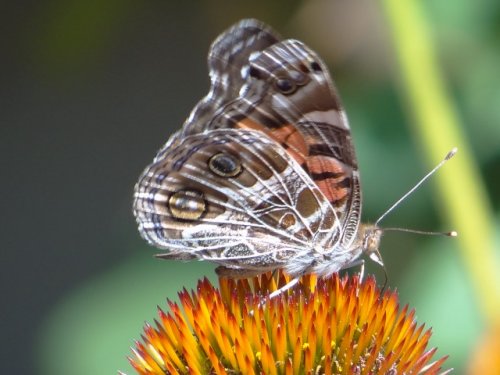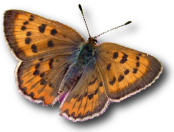
Our least common Lady. It is easily told from the others by the very large eyespots on the hindwing beneath. Multiple-brooded, and occurs in a great variety of habitats at all elevations--but its seasonal life-history is poorly known. Is it migratory, either altitudinally or latitudinally? Where is it in the winter when, unlike our other Vanessa, it is never observed?
In the Central Valley often in riparian and tule-marsh habitat; in the mountains often seen nectaring on Rabbitbrush in September, and in summer mad about Pink Dogbane flowers. The very beautifully-marked larva is concealed in a chaffy web on its host plants, Everlastings (Gnaphalium and Anaphalis, Asteraceae). This species has now been found on several occasions breeding on the exotic bedding plant Gazania in gardens, and is easily reared through on it.
